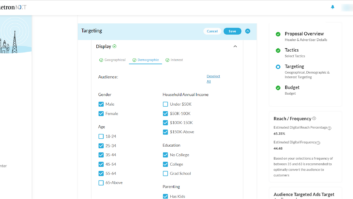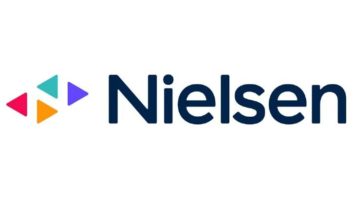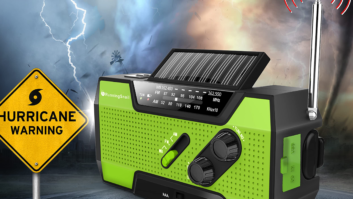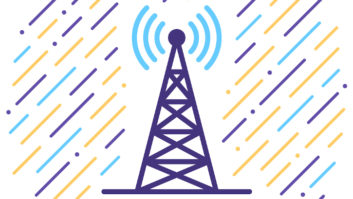From one perspective, there is great elegance to the IBOC scheme for digital radio.
It allows radio stations and consumers to convert to digital technology at their own respective and preferred pace. It brings new benefits without much sacrifice in the legacy environment (OK, for FM, at least).
Overall, this is a much less stressful transition than the more regulated, mandatory digital transition that the television industries in the United States and a few other countries are undergoing. Which is a good thing for radio, right?
Maybe not. The IBOC transition is evolutionary in every sense of the word. This implies that it could take geologic epochs of time to elapse before it concludes. And this may be just too slow for the species to survive.
(click thumbnail)Intelligent design?
The IBOC transition may actually be too elegant for its own good.
The fact that there is no real urgency other than market forces reduces the power of its engine, especially when those market forces are so paltry.
When it comes to digital transitions, IBOC really is your father’s Oldsmobile. The ride is so smooth that you may not even feel like you’re moving — and maybe (from the whole industry’s perspective) that’s because you’re not.
No one likes forced change, but a little temporary pain generally goes a long way toward permanent improvement. Without a forced transition, it’s highly unlikely that DTV would be at its current penetration level in the U.S.
The fact that FM analog radio is “good enough” for most consumers doesn’t help, either. HDTV is so obviously better than NTSC video that it has helped drive consumers to spring for new, large screens as a part of the transition. New flat-screen form factors have helped increase the spouse-acceptance factor, as well.
Unfortunately, no such similar accelerants are evident in the IBOC world.
The inertia-busting deadlines that the FCC set all along the path for the DTV transition have ushered it along quite nicely. These will culminate with the mother of all deadlines next Feb. 17, when an entire broadcast infrastructure will be shut down overnight.
In evolutionary terms, this is like knowing exactly when the next big meteor will hit. Meanwhile, radio during this time has been basking in its warm, wet planet, with lots of food and most of the predators keeping their distance. Not exactly the ingredients for a robust natural selection process.
In other words, stasis rules in radio, and with no meteor on the radar, it may not even notice its world sinking slowly into the swamp.
The baby steps of the U.S. digital radio transition keep on coming, as well.
For example, who knew until recently that the 1 percent IBOC solution was just HD Radio v1.0, and that v2.0 might run at 10 times higher power? That’s a substantial incremental ticket, and although it might help, it’s still not going to provide an HDTV-like perceived differential to consumers (although it might cost proportionally that much to implement for broadcasters).
Monkey trial
Classic information theory tells us that it’s hard to judge the rate of change that a process is truly undergoing when you’re in the midst of it. Slope cannot be calculated instantaneously, but only differentially.
We also have no idea how long the IBOC transition will take overall, so there is no way to know where we are in the process. Is this still IBOC’s infancy, or are we already past puberty and settling into adulthood? (Is the 10 dB power increase a midlife crisis?)
The good news is that broadcasters have generally done their part (again, at least on the FM side), with what appears to be something close to a critical mass already operating in IBOC hybrid mode in the major radio markets. The bad news is that consumers have not yet responded in kind — not even close.
How long a lag should broadcasters expect?
Part of this could be due to simple chicken and egg problems, where consumers wait for broadcasters to offer new service, and broadcasters wait for a big enough audience before launching those services.
This is made worse when a piecemeal rollout such as IBOC’s is involved, since some stations and markets will be ahead of others, and consumers cannot make a uniform assessment of value (as they might with satellite radio, for example, where all new services are available at the same time everywhere).
Another component that suffers from such languorous and fragmented uptake is promotion, where a slow burn toward increased consumer penetration is difficult to support. Such a long-term, continuous campaign is perhaps the hardest type of promotional exercise to pull off successfully.
This is why most product launches are marketed with a short-term blitz, a tactic that is greatly preferred (and its effects more easily measurable) by marketers.
Stirring the primordial soup
There are ways to get IBOC receivers into consumers’ hands in more stealthy fashion than a pure sale, of course.
Making IBOC radios standard equipment in cars is the most obvious method, which is starting to happen, but other types of receivers are important, too. So far, the portable market has not yet emerged (due to both technical and cost obstacles, both of which will hopefully be removed or reduced soon).
Meanwhile, an attempt to add an IBOC-reception requirement to new satellite radios as a condition of that industry’s proposed merger has apparently failed at the FCC.
One other positive aspect of the IBOC conversion, which we’ve discussed here before, is its element of distributed risk. Rather than one big pool of capital being required up front, each station bears a proportional cost of the conversion, on its own terms (with several, flexible technical approaches to choose from) and according to its own funding schedule.
Eventually, however, if the format continues to languish among consumers, broadcasters could begin to wonder in hindsight what else could they have done with the money.
This issue may now surface sooner rather than later: Consider the discussions if broadcasters have to ask their funders for a larger amount than previously thought for IBOC conversion (or, at stations that have already converted, seek a second round of funding) for increased digital power.
This could force stations to look hard at what kind of return the existing investments have already paid (at their own stations and elsewhere), which absent this power-increase premise, they might be willing to avoid examining for a while longer to let the market mature.
The comfortable evolutionary process that the IBOC digital radio transition allows might have made sense when it was first conceived, but the media world has become a far more competitive environment since then. This is no place to use a transition process designed for survival of the fattest.













